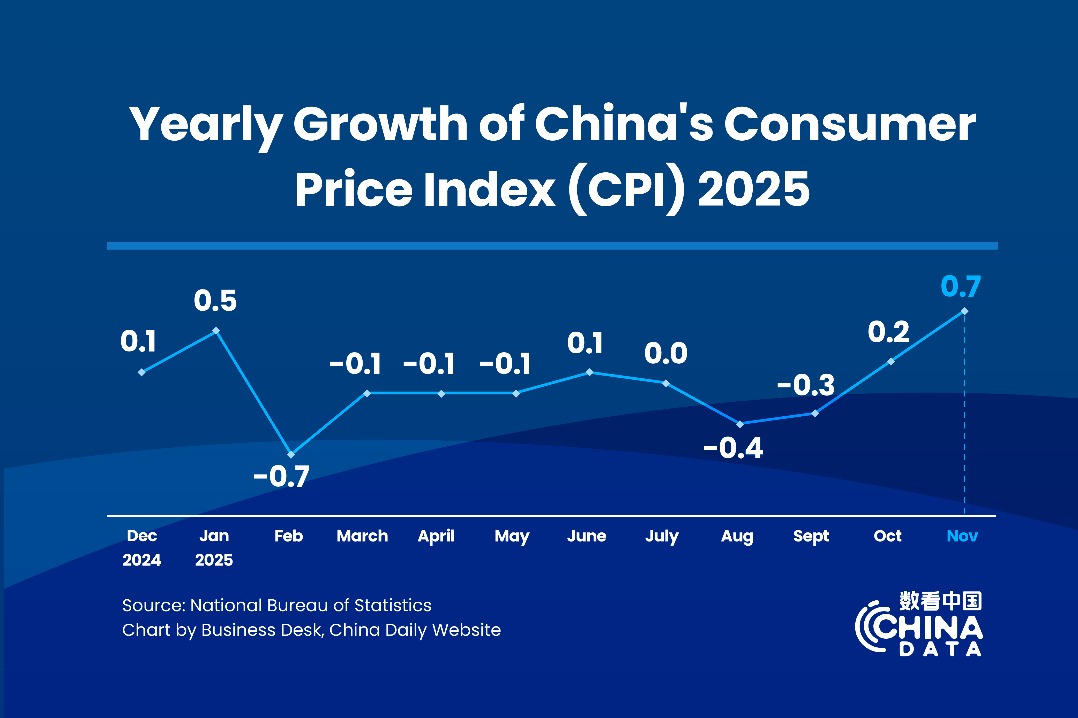Nation expected to play leading role in regional, global recovery


As Asia's economic health tides over its worst impact from the novel coronavirus pandemic, analysts expect China to play a key role in leading the regionwide rebound with its further opening-up and industrial innovations.
China's recovery "is probably the most positive factor for the world economy and also for Asia," said Rajiv Biswas, executive director and Asia-Pacific chief economist at consulting firm IHS Markit. The world's second-largest economy "is a huge market for exports for most of the other Asian countries, and also for Australia and for New Zealand."
Biswas said China will lead the global and regional recovery, with the country's GDP expected to grow at around 7 percent in 2021.
Suthiphand Chirathiva, executive director of the ASEAN Studies Center at Chulalongkorn University in Bangkok, said, "China's recovery is of ASEAN's interest," referring to the Association of Southeast Asian Nations.
"The more developed ASEAN nations, like Singapore, Malaysia and Thailand, the more they are linked to China's global value chain, the more impact they will feel from China's recovery," said Suthiphand, also executive director of Thai conglomerate Central Group.
Suthiphand expects business-to-business exchanges between China and ASEAN to continue to grow after the pandemic.
Suan Teck Kin, executive director and head of research at Singapore's United Overseas Bank, said China will be one of the few countries in the world producing positive growth this year.
He added that China can be a locomotive supporting the economic recovery of the region and beyond.
Consumption and investment from domestic and foreign sources have been stimulated, and innovation across industries encouraged, by specific government-induced packages. In the second quarter, China's economy reversed a 6.8 percent first-quarter decline and posted year-on-year growth of 3.2 percent.
"China is an important factor," said Suan, adding that China's performance will be particularly important for the ASEAN region. "If China shuts down, we will be unable to get our goods or the needed inputs from China. Now China is back on its feet, so that should be able to help us get through this challenging period."
China has been ASEAN's largest trading partner for 10 consecutive years. The 10-nation bloc became China's largest trading partner for the first time in the first quarter of this year, surpassing both the European Union and the United States, according to Xinhua News Agency.
First-half GDP was hit hard across Asia due to pandemic restrictions and shut-downs, with record contractions in Malaysia, the Philippines, the Republic of Korea and Japan. Yet Suan believes the GDP performance of many Asian countries in the second quarter of this year should have been the worst of the cycle, and things should get better unless there is another large-scale lockdown.
Biswas of IHS Markit, who also believes the worst is over, said, "The pandemic has been a public health crisis, so it is very different from a financial crisis like (the global financial crisis) in 2009."
The sharp shocks have been concentrated in the first half of this year. As the world economy slowly recovers, the medium-to long-term impact on Asia-Pacific growth will be relatively moderate, Biswas said, with Asia still on track to represent half of global GDP by 2030.
He noted signs of recovery in the June data, including the purchasing managers' index, which saw a strong rebound in many countries as lockdowns were eased.
Biswas also forecast growth for the whole Asia-Pacific region of 0.6 percent in the third quarter and 0.7 percent in the fourth quarter-up from the 2.8 percent contraction in the second quarter. He expects the region's economy to shrink 1.9 percent for the full year.
A report in July from IHS Markit said emerging markets saw a return to growth of their production trends for the first time since January, outperforming those of developed markets. Countries such as Malaysia and China recorded some of the strongest output gains globally, while Russia, Myanmar, the Philippines and Vietnam also reported higher production trends.
To boost their economies, many countries in Asia have launched stimulus packages, ranging from Singapore's stimulus equal to 20 percent of GDP, to India's $267 billion special economic package. These will be coupled with increasing Chinese imports and outflow of Chinese tourists, among other factors.
Suan at United Overseas Bank said countries cannot ignore the importance of international cooperation during the pandemic. "If countries are able, at a certain degree, to synchronize their preventive measures and deal with this disease in a cohesive (way), that would go toward putting all the economies back on track," he said.
Noting that the Regional Comprehensive Economic Partnership is expected to be officially signed in November, Suthiphand of the ASEAN Studies Center said the RCEP will take regional integration to a new level and showcase multilateralism to the world.
Dionisius Narjoko, senior economist with the Economic Research Institute for ASEAN and East Asia, based in Jakarta, Indonesia, said the world will see different types of economic activities after the pandemic, including more use of robotics in factories, which means governments have to be prepared for reform.
Noting the pandemic has fundamentally changed people's way of living and working, Narjoko said regional governments have to conduct regulatory reform or other social reform to prepare for a new type of production model that embraces new trends, including the digital economy.
However, there is still much uncertainty as to how the world can end the pandemic, in terms of the resurgence of COVID-19 and distribution of vaccines. What the recovery will look like is unclear, "whether it will be a V-shaped recovery or will last longer and become a U-shaped recovery," said Narjoko.
By 2021, the region's economy is expected to show a strong rebound, with growth of 5.1 percent, according to IHS Markit projections. Strong recoveries are expected in countries including India, the Philippines, Vietnam and Malaysia.
"The economic recovery is about the recovery of demand," said Narjoko, who hopes China's recovery will enable Southeast Asian nations to boost production.



































